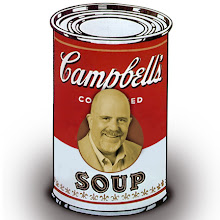
In the midst of all the various news stories this week was this little reminder that it was the 30th anniversary of the Reverand Jim Jones and his followers death in Guyana. Like a lot of other disaster stories, I had forgotten about this tragedy, but the news coverage made me think of how the Air Force handled the crisis.
One year after the Air Force returned the remains of the reverand and his followers to Dover AFB, Del., I remember how the senior Air Force commander at DINFOS turned over most of his commander's call so that a classmate statoned at Dover during the tragedy could brief on how she and her colleagues handled the disaster. Until the Jonestown Massacre, Dover had been a sleepy little base with a C-5 airlift wing and the Air Force mortuary.
According to my classmate, the influx of telephone calls, not only from the media but also from the family and loved ones of Jones' followers forced the public affairs staff to turn to volunteers to help deal with the crush of community affairs and media questions. Looking back on that talk, I found it amazing that a senior Air Force officer would use his time to brief all of his service's students on what happened at Dover.
If there is a message to this blog, it's this. First, we can learn from those junior in service. Secondly, the good public relations organizations adapt to crisis situations. Before the Air Force could send in more professional help, the public affairs officer at Dover was smart enough to turn to a group of caring volunteers who could answer the phones.
I remember my classmate talking about how the volunteers served 12 to 14 hour days for over two weeks to deal with the influx of calls. As a result of the Jim Jones' tragedy, the Air Force began to realize that when a major crisis occurs that it needs to bring in people to answer the phone.
Some 15 years later, I was working in the Bosnian NATO campaign when we had more calls than we had people to answer the phones after two Air Force F-16s splashed three Serbian Galebs. As someone who remembered the lessons from that commander's call inolving Dover, I got our office to get more volunteers and phones.
Today, with the advent of Twitter and other social media tools, it would be easy for the Air Force to set up sites where people could chat and respond in real time to questions involving a tragedy on the scale of the Jonestown massacre. While I hope that the Air Force never has to deal with another tragedy involving the deaths of so many, I wish that the military and other government agencies realize the need to embrace social media tools along with more phones.




No comments:
Post a Comment